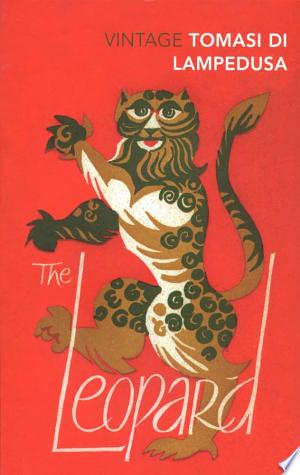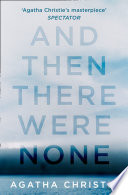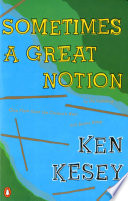
"The Leopard" Summary
By Jo Nesbø
crime | 330 pages | Published in 2007
Estimated read time: 5 min read
One Sentence Summary
A nobleman witnesses the decline of his aristocratic family amidst social and political changes in 19th century Italy.
Table of Contents
Introduction
"The Leopard" is a historical fiction novel written by Giuseppe Tomasi di Lampedusa and published posthumously in 1958. The novel is set in the late 19th-century Sicily, during a period of great political and social upheaval. It tells the story of the decline of the Sicilian aristocracy and the rise of the bourgeoisie.
Through vivid descriptions and captivating storytelling, Lampedusa explores themes of identity, change, and the inevitability of time's passage. The novel offers readers a glimpse into the complexity of society at a pivotal moment in history.
Brief Synopsis
Plot Overview:
"The Leopard" follows the life of Don Fabrizio Corbera, Prince of Salina, a nobleman from an ancient Sicilian family. The story is set during the period of the Italian Risorgimento, when Garibaldi, a leading figure in the movement for Italian unification, was advancing towards Sicily.
Don Fabrizio is a contemplative man who watches the world around him change with a mix of detachment and resignation. He observes the decline of his own class and the rise of the bourgeoisie, as well as the emergence of a new political order.
Setting:
The novel is primarily set in Sicily, with scenes taking place in the city of Palermo and the Prince's ancestral estate, Donnafugata. The story unfolds against the backdrop of a crumbling feudal society, slowly being transformed by the forces of modernity and unification.
Main Events
The novel begins with the visit of the Prince's nephew, Tancredi, who is a staunch supporter of the Italian unification movement. Tancredi introduces the attractive and ambitious Angelica, daughter of a wealthy merchant, to the Prince's family. Despite the generation gap and class differences, Angelica and Tancredi embark on a turbulent love affair.
As the novel progresses, the Prince attends a lavish ball hosted by the new ruling class. The event marks a significant shift in power, as the old aristocracy is displaced by the emerging bourgeoisie. The Prince dances with Angelica, recognizing her as a symbol of the changing times and the decline of his own class.
The novel reaches its climax when Garibaldi's forces arrive in Sicily. The Prince's family is forced to flee Donnafugata as the political landscape changes rapidly. The old order gives way to a new Italy, despite the Prince's hopes for a more gradual and controlled transformation.
Main Characters
| Character Name | Description |
|---|---|
| Don Fabrizio | The Prince of Salina, a nobleman facing the end of an era |
| Tancredi | The Prince's nephew, a supporter of Italian unification |
| Angelica | The daughter of a wealthy merchant, Tancredi's love |
Themes and Insights
Identity and Change: Throughout the novel, the characters struggle to maintain their sense of identity in the face of sweeping societal change. The old order of the aristocracy is fading, and the new bourgeoisie is rising. The Prince grapples with his diminishing relevance and tries to adapt, while Tancredi embraces the changes, seeing them as an opportunity for personal and political advancement.
Time and Decay: Lampedusa weaves themes of time and decay throughout the novel. The Prince realizes that the past is slipping away and that he is nearing the end of his own life. The once-grand Donnafugata estate crumbles, symbolizing the decline of the aristocracy. Lampedusa portrays the passage of time as inevitable and unstoppable.
Power and Politics: The novel explores the dynamics of power and politics at both the personal and societal levels. The Prince, a politically disengaged man, witnesses the birth of a new Italy and the struggles for power within it. The intricate dance of alliances and rivalries reflects the broader social and political changes occurring in Sicilian society.
Reader's Takeaway
"The Leopard" is a captivating and introspective novel that transports readers to a pivotal moment in Sicilian history. Lampedusa's evocative prose and keen observations offer a profound reflection on the nature of change, the passing of time, and the fragility of identity. As readers journey through the story of the Prince and his family, they are left contemplating their own place within a world in flux.
Conclusion
"The Leopard" is a literary masterpiece that delves deep into the social, political, and personal transformations of Sicilian society during the Italian Risorgimento. Lampedusa's vivid storytelling and rich character development make this novel a must-read for anyone interested in history, identity, and the universal experience of change. As the Prince navigates the shifting landscape of his world, readers are compelled to confront their own notions of power, time, and the inevitability of change.
The Leopard FAQ
What is the genre of the book 'The Leopard'?
Who is the author of 'The Leopard'?
What is the main theme of 'The Leopard'?
When was 'The Leopard' first published?
Is 'The Leopard' based on a true story?
Is 'The Leopard' a standalone book or part of a series?
Are there any film adaptations of 'The Leopard'?
What is the length of 'The Leopard'?
Is 'The Leopard' suitable for young readers?
Has 'The Leopard' won any awards?




